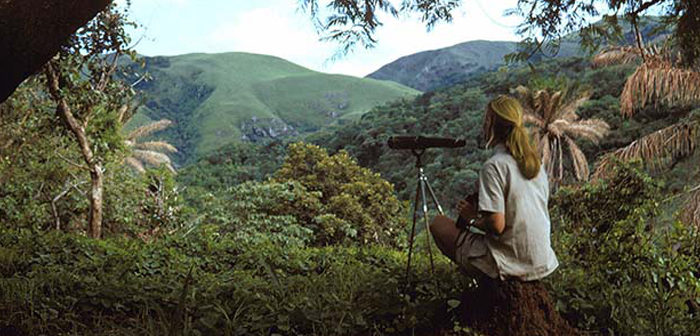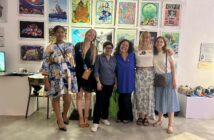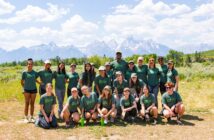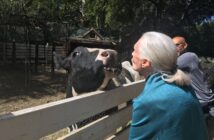For some, seeing is believing and a way to connect to experiences. Photos have the exceptional power to do just that. For example, when we read or hear that thousands of hectares of land are logged, the glaciers are melting at record speed, or that chimpanzees are so like human beings, nothing relates those facts and ideas better than an image. Nature photography, especially with animals, is inspiring and invigorating. The desire for that rare and exquisite shot encourages people to get outside and explore on their own two feet, which can also lead to a more sustainable lifestyle. Today is the 12th anniversary of Nature Photography Day and the North American Nature Photography Association (NANPA) has dedicated this day to promote the enjoyment of photography and to emphasize the importance of images in advancing conservation efforts — protecting plants, wildlife, landscapes, and relationships between all living things.
In 2017, we may take for granted the revolutionary work that Dr. Jane Goodall pioneered starting in the 1960’s. Since Dr. Goodall’s groundbreaking research on chimpanzee behavior and their behavioral likeness and connection with humans, there have been many studies on these and other great apes. For millennials, this information may seem ordinary. However, it was not until Dr. Goodall journeyed into Gombe, Tanzania, and even later when people started recording her work through pictures, did the global public see what she could see.
It was from these iconic photographs, many taken by National Geographic photographer and filmmaker Hugo van Lawick, that the world was first (and continues to be) immersed in the wonder of the lives of wild chimpanzees. Lawick and Goodall made the ape family of Flo, Fifi, and Flint famous and humanized them through photos of their interactions with Dr. Goodall. Beyond that, the images represent, in compelling visual form, the relationship between humankind and the rest of the animal kingdom, sparking a global revolution of knowledge and conservation.
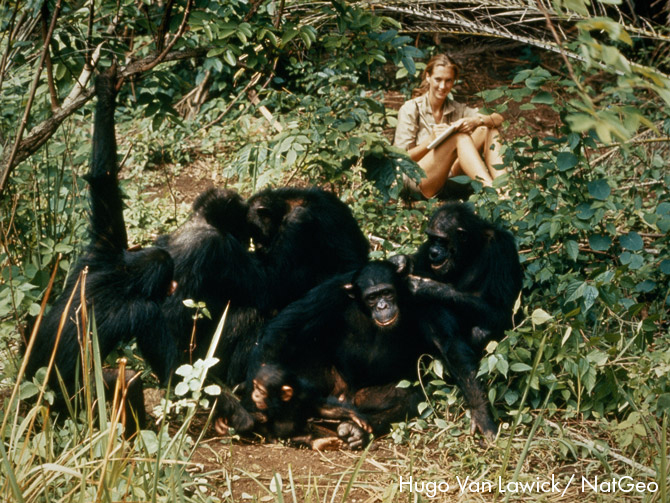
The vision of Dr. Jane Goodall has not ceased since her research began decades ago and photographers have continued to capture chimpanzees and the Congo basin, satisfying our curiosity and inspiring. Individuals like Michael Nichols, a former National Geographic journalist and photographer, showcase the impact of Dr. Goodall’s work. Nichols has been good friends with Dr. Goodall since 1989, when he traveled to Gombe with her to study and photograph chimps. The book, Brutal Kinship, published in 1999, is a collaboration by Nichols and Dr. Goodall, the goal of which was to show through photos and stories that chimps are emotionally, physically, and intellectually closer to us than we ever thought.
At the Jane Goodall Institute, this legacy continues today with even more brilliant photography and observation. Bill Wallauer, a photographer and filmmaker for the Jane Goodall Institute, was asked personally by Dr. Goodall to record the daily activities and behavior of chimps at Gombe Stream Research Center in 1989. Wallauer lived in the forest with the apes for 15 years gracing us with breathtaking photos. Today, Wallauer speaks about his time in Africa and hopes his photos encourage people to do whatever they can to ensure the survival of chimpanzees. (Read more about Bill’s trips to Gombe and photography here.)
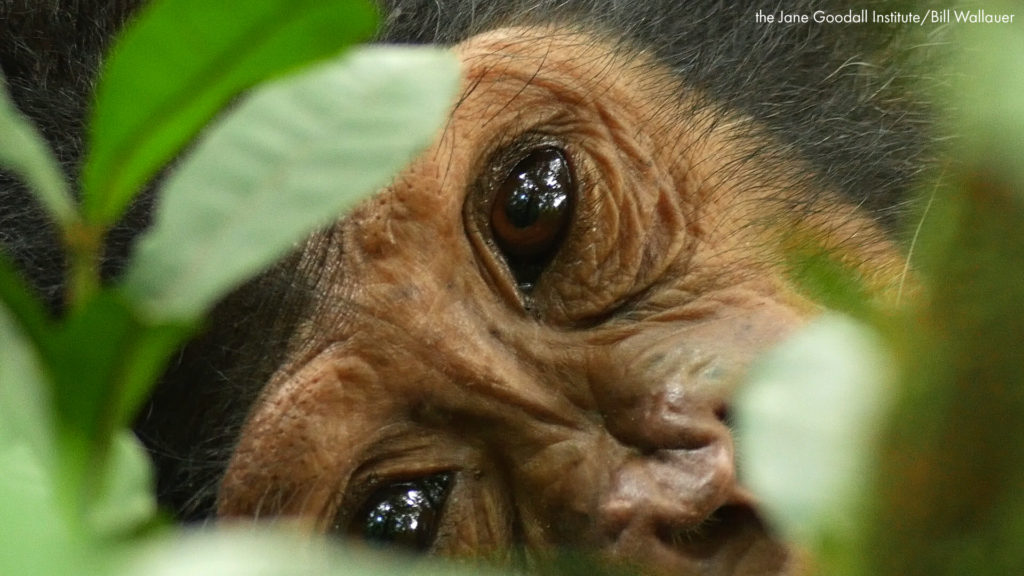 Fernando Turmo joined the Jane Goodall Institute in 2006 and became the resident photographer and videographer at Tchimpounga Chimpanzee Rehabilitation Center in the Republic of Congo. In one of the most outstanding viral/cultural moments of the last 10 years, Turmo captured and JGI shared the beloved instance when Wounda the chimpanzee embraced Dr. Goodall in a hug right after her release on Tchindzoulou island, one of Tchimpounga’s sanctuary sites, two years ago. It is moments like this that transform the way we think about our responsibilities to and relationships with other animals. Watch the video here.
Fernando Turmo joined the Jane Goodall Institute in 2006 and became the resident photographer and videographer at Tchimpounga Chimpanzee Rehabilitation Center in the Republic of Congo. In one of the most outstanding viral/cultural moments of the last 10 years, Turmo captured and JGI shared the beloved instance when Wounda the chimpanzee embraced Dr. Goodall in a hug right after her release on Tchindzoulou island, one of Tchimpounga’s sanctuary sites, two years ago. It is moments like this that transform the way we think about our responsibilities to and relationships with other animals. Watch the video here.
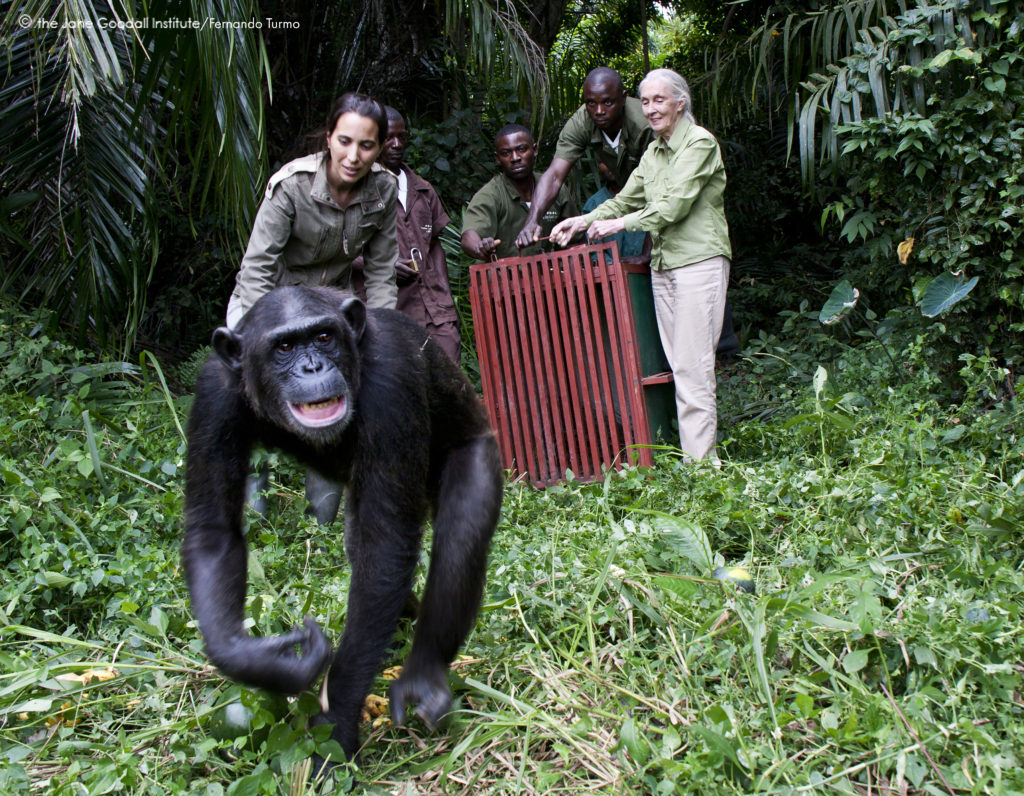
Jane Goodall and Rebeca Atencia release orphan chimpanzee Wounda on Tchindzoulou Island
The iconic and awe inspiring images of Dr. Goodall with our closest relatives in the forest have exposed the world to wildlife and connected us with non-human animals in a whole new way. If you think about it, Dr. Goodall’s story would not have the widespread impact it has had if not for the incredible images that captured her experiences. The Jane Goodall Institute, with the help of these photographers, brings wildlife into people’s homes every day, which we hope will inspire you to see the beauty of chimpanzees in the natural world, and help us in protecting their sacred lives.
When I go back to Gombe, it’s to be in that timeless world where it’s soft and where life is entwined and you actually see the pattern of nature. I always feel this great spiritual power which I believe is around. – Dr Jane Goodall
We are all lucky to be able to see what Dr. Goodall saw, share it with future generations, and continue to see all the spectacular beauty of the natural world through the Jane Goodall Institute, other organizations and individuals, possible only through the power of photography.
NANPA has a nature photo contest open until June 16. The Jane Goodall Institute also encourages you to share your nature stories and photos with nature! Click here to submit! JGI also has a special relationship with the International League of Conservation Photographers (ILCP), and Jane has even recorded a video supporting the organization and the importance of photography in storytelling and building connection to conservation efforts.


